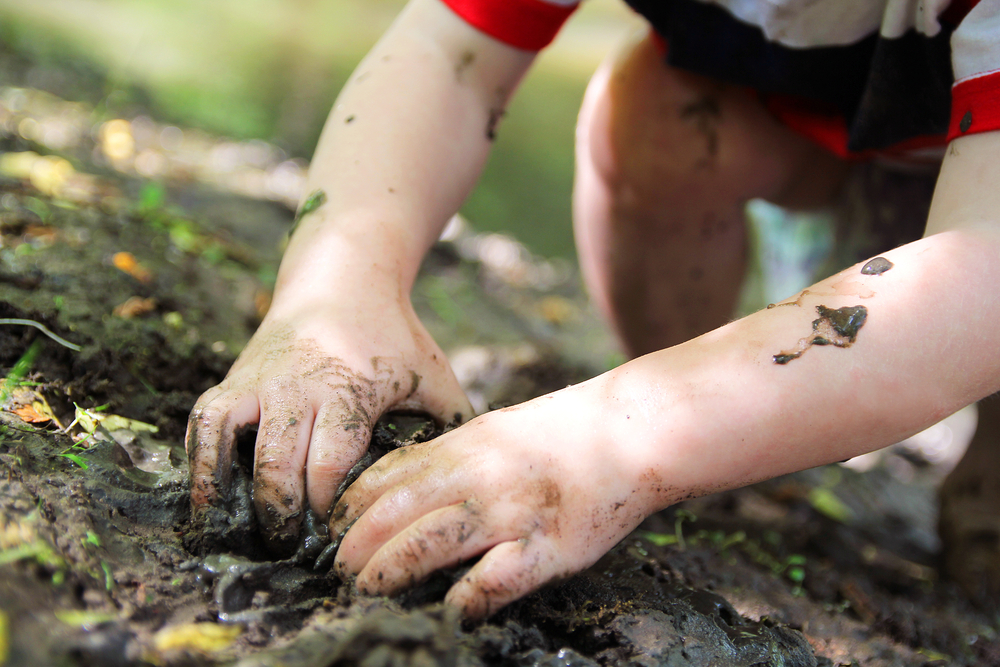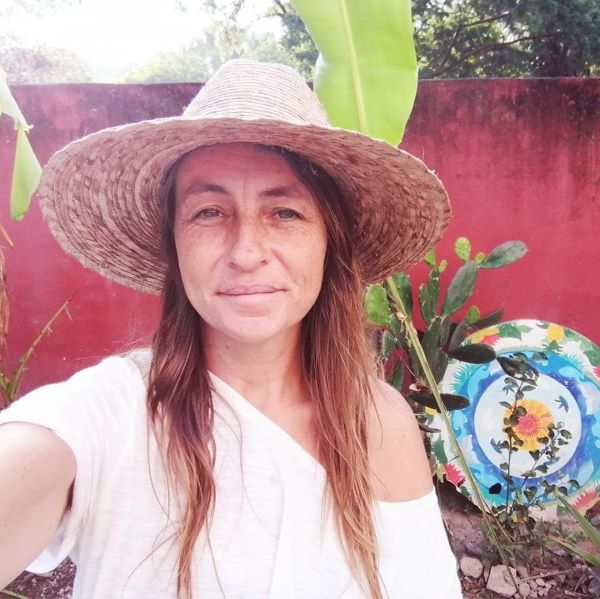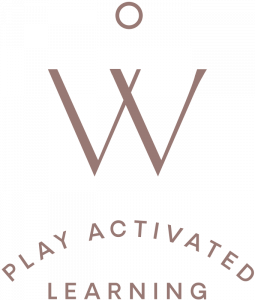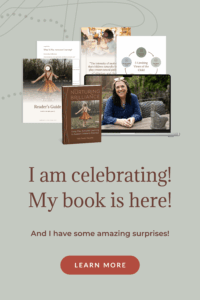We have all heard the term ‘mud play’ and many of us might even remember puddle jumping or mud pie games as kids. We know how enjoyable those experiences can be!
Those of us that work with children or have children of our own might be aware that playing in the mud is also considered beneficial, for a variety of reasons. And we probably know how challenging it can be to work with and clean up as well, which can feel intimidating when considering it for our educational spaces.
If we tune into the why’s and the how-to’s of actually bringing the mud IN to our learning environments, it might make it easier to get started.
Let’s start there.
Why is it so important to include mud play in our educational settings?
Aside from the numerous sensory and developmental benefits of mud play, the idea that I like to refer to is this concept of ‘cultivating connection’.
We want to provide opportunities for our children and the children in our care that encourage their connection with the natural world, the bio-region in which they live and learn.
Mud is a representation of the element of Earth, as is clay, soil, sand or stones. All of which are found in nature and are incredible materials to integrate into the learning experiences for our children.
In order for them to feel connected to their natural environment, they need to experience it and have a certain intimacy with it, so that they know they are a part of it.
Playing with natural materials cultivates that connection.
Now, more than ever, we need to be caring for and protecting our planet and the living beings on it. By encouraging that connection in the children, we are also cultivating compassion in them and opening up their sphere of awareness to the natural world and how we are all interconnected. When someone feels connected to someone or something, they innately want to protect and care for that person or thing. That is what this is all about.
So, how do we bring mud into our play spaces and educational settings?
It must be said that not everyone has the space available for a forest school or a big open outdoor space with an elaborate mud kitchen or messy play area. That is a reality for many educators and families. So, while I share ideas for outdoor learning opportunities and spaces that are open to having mud in their setting, I am also sensitive to the reality that not everyone has the privilege of those spaces or schedules that permit this type of play.
It is important to figure out creative ways that will work for you and your learning space.
If you are able to create a mud play area, even if only temporary, here are a few important tips that will help you embrace this type of play quicker and bring the mud in!
Let go
Part of this experience is letting go of what YOU think the play needs to look like or how tidy the space needs to be. Do not let the risk of a mess determine the play or inhibit you from creating a truly exploratory experience for the children.
Preventative measures
If working indoors, use a plastic tablecloth either on the table or the floor where they will be playing.
Use dry mud or clay and do not include water in the invitation
Contain the mess
If you must contain the mess, use small amounts of mud displayed in little containers as opposed to big buckets or tubs of it. Include tiny spoons and smaller dishes. It will invite the children to work on a smaller scale and help minimize the amount of materials used, which makes for an easier clean up!
Now for a few of our favorite mud play invitations:
Kitchen Platter Invitation
We lay out trays that include bits of the natural environment displayed beautifully – flower petals, blades of grass, banana leaves, dried corn, sticks, pinecones. . . whatever is relevant to your area. Include accessories and tools on the table with the tray. Think about including things like a squirt bottle of water and a bowl of previously made mud, pots and some mixing spoons, scissors and bamboo knives…whatever you like, be creative! There are infinite possibilities of what this setup can look like!
Here are some examples of our previous invitations for inspiration.
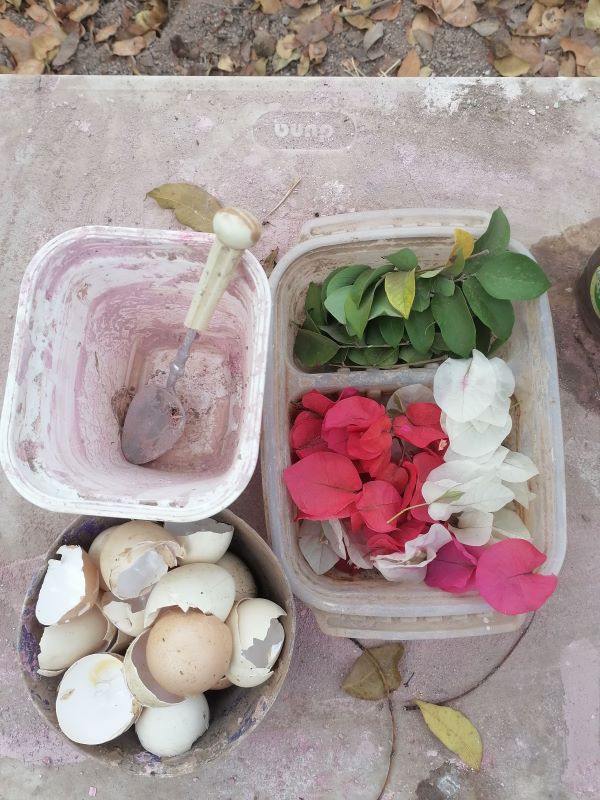
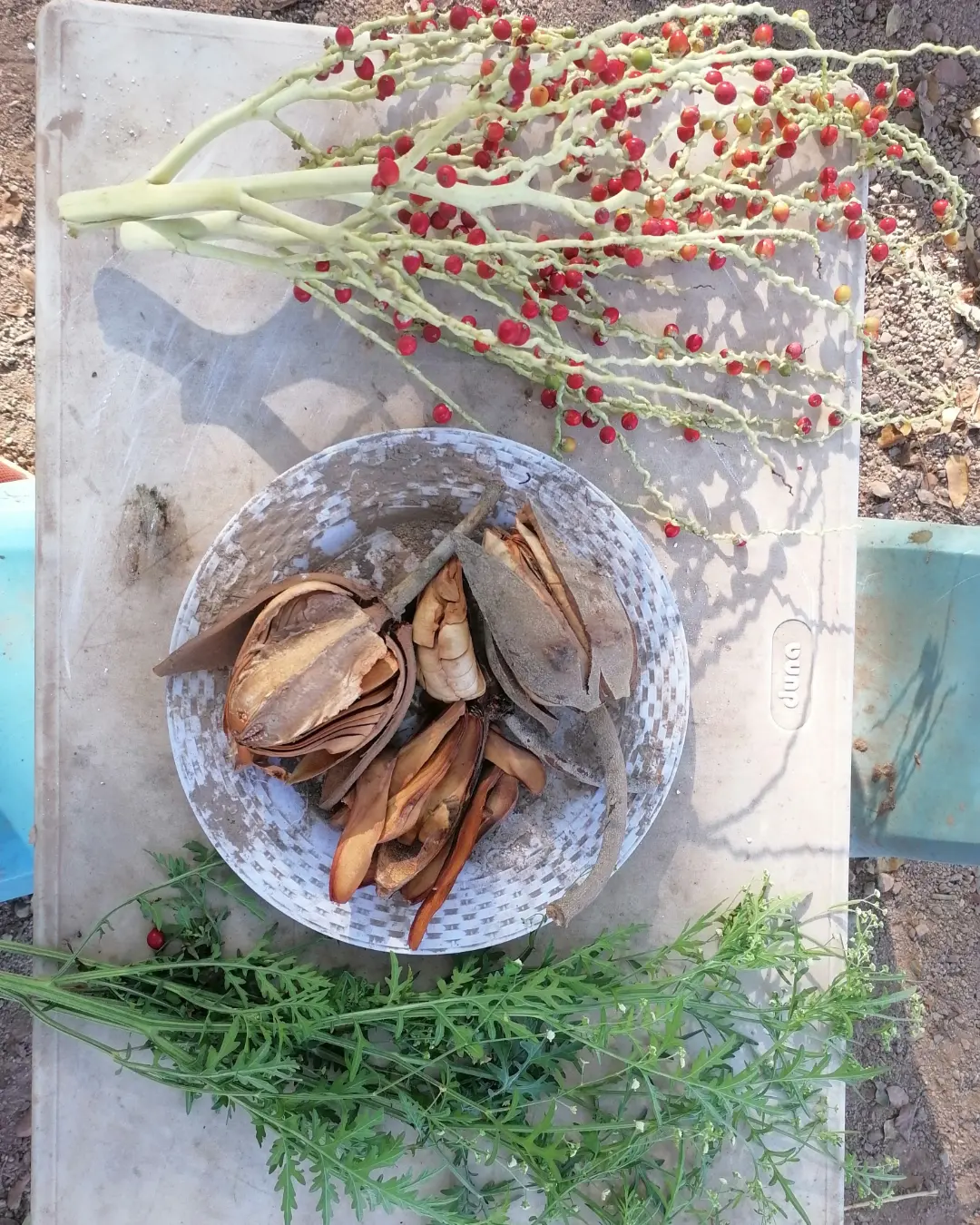
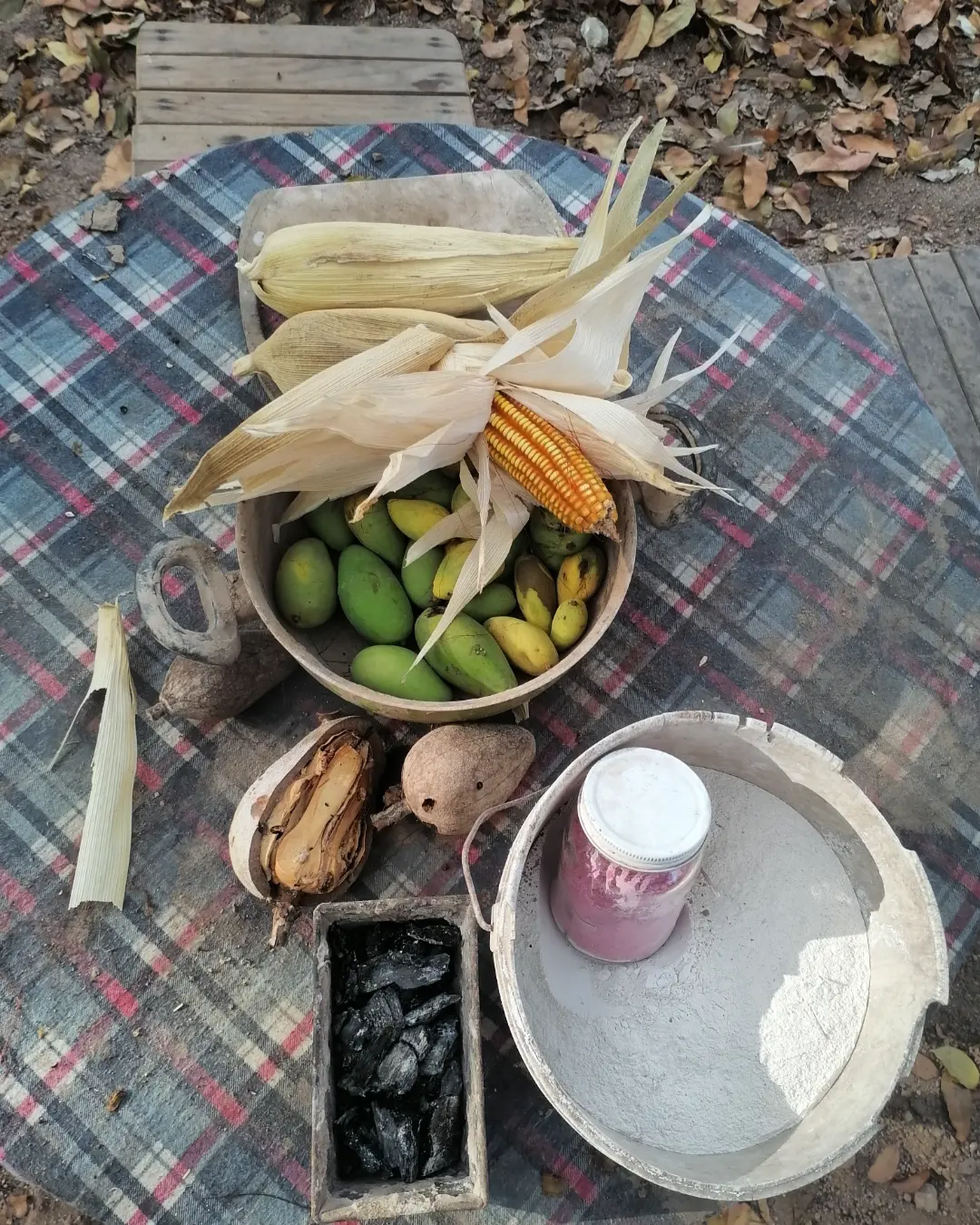
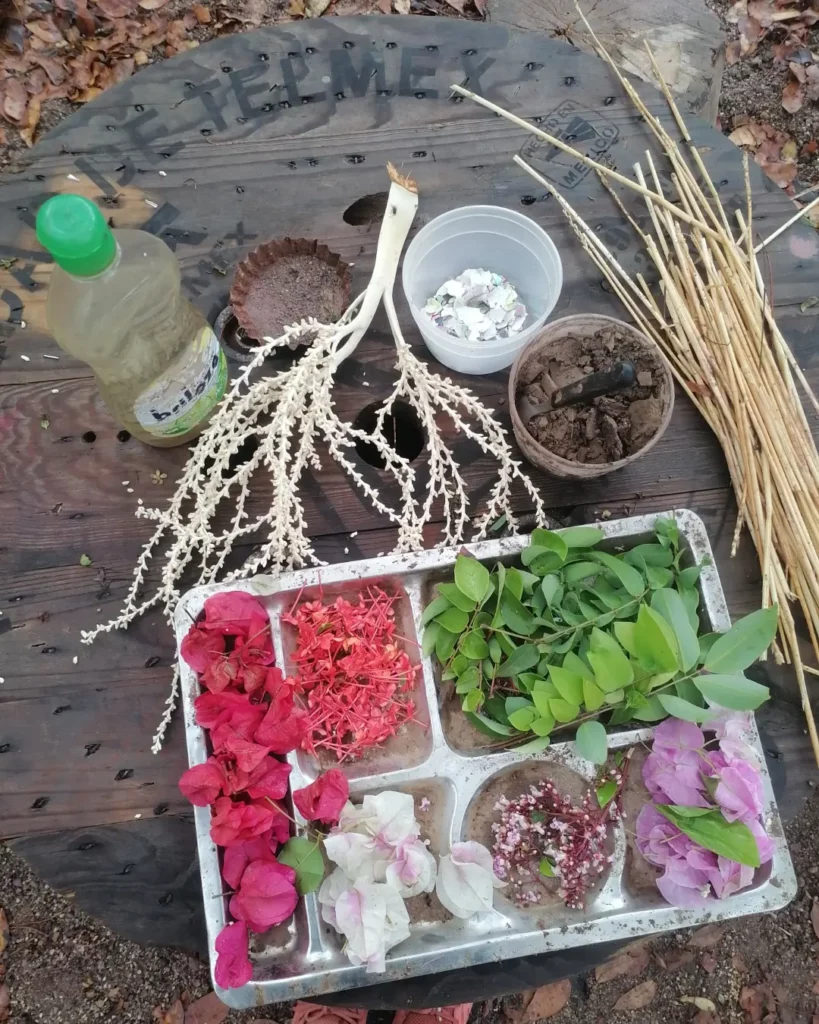
Material Mix-up
This is a favorite way to integrate the Earth element into their play. We use a total mix-up of earth related materials within the mud play space. Some examples are colored chalk, plaster powder, bits of charcoal, sand, natural paint pigments and egg shells. It is important to include tools you may not include in the kitchen invitation. For example, the mortar and pestle, small hammers and big stone bowls, silicon molds. So much exploration can come from mixing materials up, transforming one to another.
Mud Mural
This is a collective invitation that can span over a long period of time and can include different groups of children. The idea is to have a wall space where they can paint on and keep adding to. Whether it is a large wall, a wooden fence on the property or a panel of wood or concrete they have access to in the yard. If nothing else, even a large piece of unfolded cardboard will do the trick! We invite them to create their own paints out of the materials we give them in the material mix-up setting. They can make paint by smashing up colored chalk and mixing it with dirt and water, maybe using the charcoal and water or simply using the mud as their medium. Giving them the open invitation and the space is all we need to provide a curious and exploratory opportunity for the children.
We love our collective mud mural wall:
The idea is that these are flexible to most settings and leave room for creativity when inviting the children in. I would highly recommend getting outdoors with them in any way that you can and again, I recognize that it isn’t always possible.
With all of this, I encourage you to be creative and brave in your settings, let go of the mess a little bit and be bold when bringing mud into your learning spaces. The children (and the other adults) will be grateful for the invitation and everyone will lean into those connections just a little bit more than before.
And don’t forget to HAVE FUN!
References
Garrick, Ros (2009). Playing Outdoors In The Early Years. Continuum International Publishing Group.
Louv, Richard (2008). Last Child In The Woods: Saving Our Children From Nature-Deficit Disorder. Algonquin Books of Chapel Hill.
White, Jan (2007). Playing and Learning Outdoors: Making provision for high-quality experiences in the outdoor environment. Routledge.
